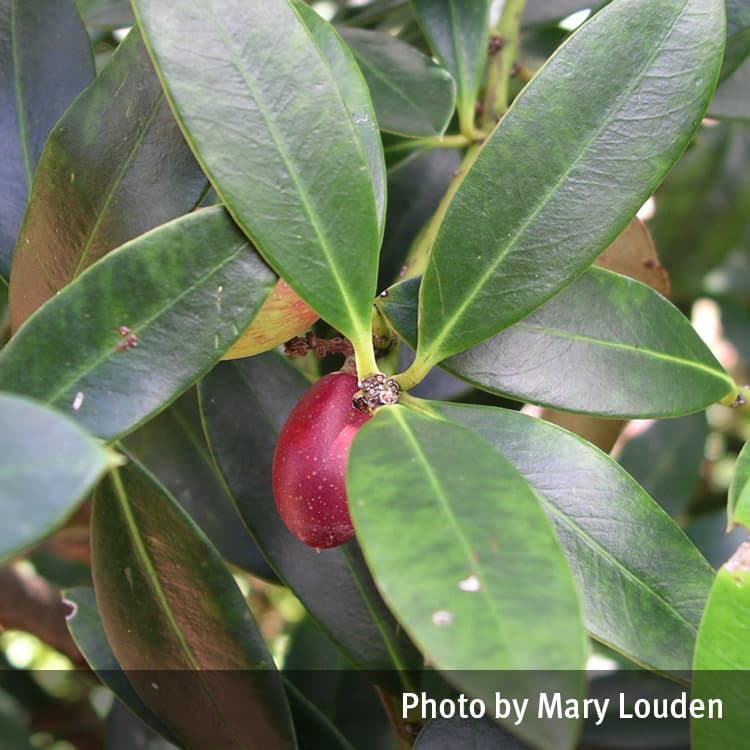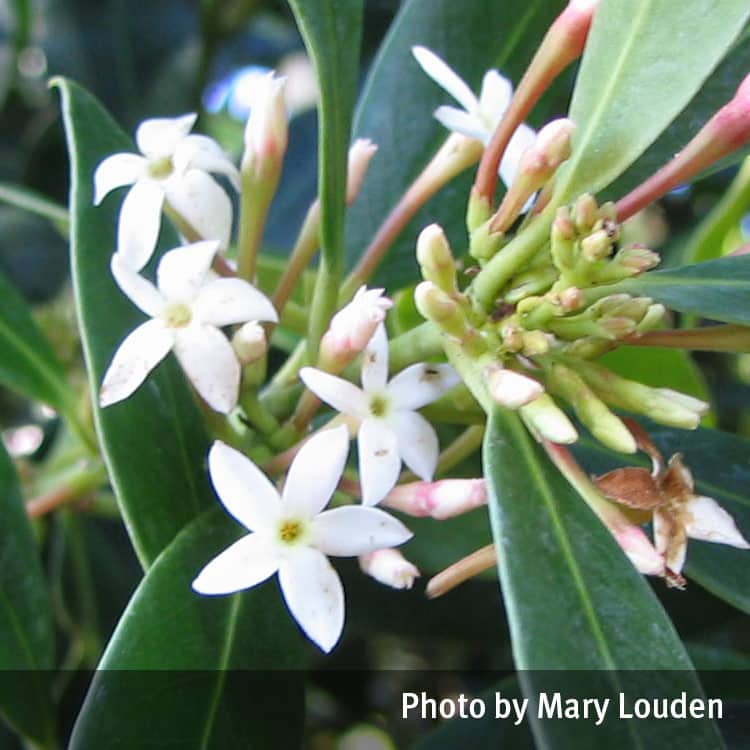Seek urgent medical assistance for all ingestions.
Description
A fragrant ornamental shrub that grows 2–3m tall.
Flowers are fragrant, white and tubular, densely clustered in leaf axils and are 1.4–2cm long with five spreading star-shaped lobes.
The leaves are opposite, dark green, elliptic, 5–12.5cm long and 2.5–5cm wide, thick and leathery in texture.
Toxicity
Symptoms
All parts of the plant are toxic. Ingestion may cause lethargy, restlessness and seizures. Related species in other parts of the world have been reported as causing deaths. Eating the fruit can cause severe gastro-intestinal irritation with abdominal pain, excessive salivation and vomiting. The toxicity of the fruit appears to be variable and the sap is an irritant to the skin and eyes.
Images


Details
Common name: Wintersweet
Botanical name: Acokanthera oblongifolia (also known as Acokanthera spectabilis, Carissa oblongifolia, Toxicophloea spectabilis)
Other common names: Bushman’s poison
Family: Apocynaceae
General description: A fragrant ornamental shrub that grows 2–3m tall.
Flowers: Flowers are fragrant, white and tubular, densely clustered in leaf axils and are 1.4–2cm long with five spreading star-shaped lobes.
Leaves: The leaves are opposite, dark green, elliptic, 5–12.5cm long and 2.5–5cm wide, thick and leathery in texture.
Fruit/Berries: Fruit are about 2–4cm long, succulent and reddish to purplish-black when ripe, similar in appearance to an olive.
Other: The sap is milky.
Last updated: July 2023